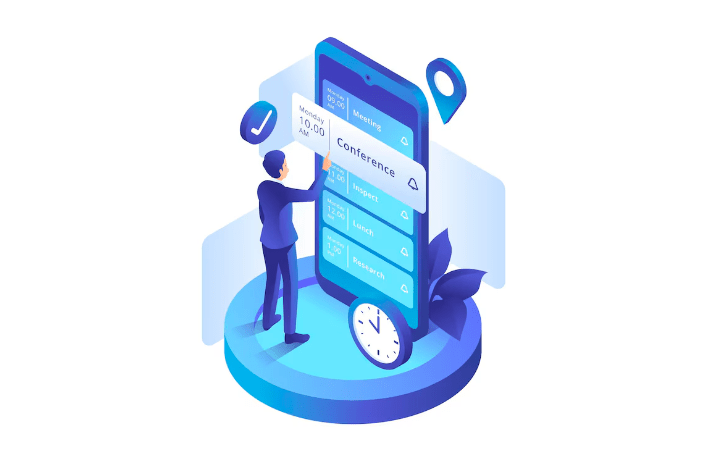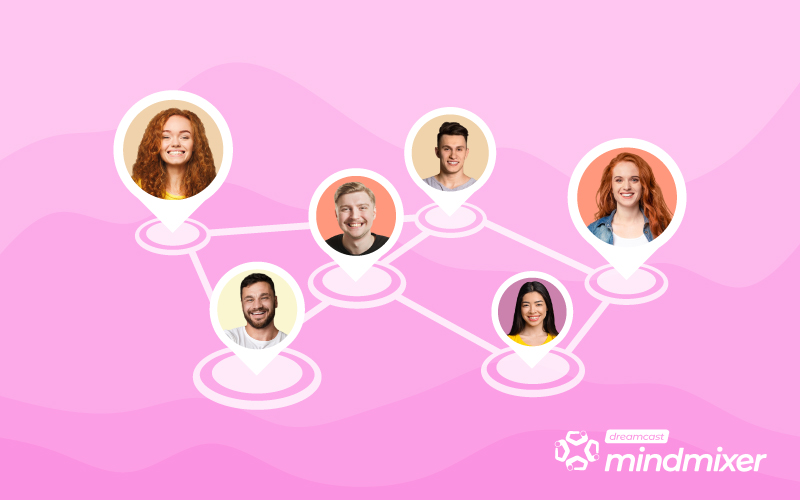Whether it’s a conference, seminar, or workshop, a well-organized agenda is essential for organizers as well as participants of an event. Event agendas were historically fixed papers with subjects to be addressed and a schedule outlined. Still, interactive event agendas have grown very common as technology has developed. Let’s explore what interactive event agendas are and how they could change the event experience for all those engaged.
What is An Interactive Event Agenda?
An interactive event agenda is a dynamic and interesting tool that transforms event planners’ strategies and execution. Engaging event agendas use modern technologies like event networking apps or platforms to provide participants with a customized and engaging experience, unlike conventional printed or static digital agendas. Interactive event agendas have one of their main benefits in that they allow real-time changes. On-demand agenda revisions, speaker updates, room assignments, and any other significant announcements are simply updated by event organizers. It ensures participants access to the most recent information. This keeps everyone informed all through the event and helps to prevent uncertainty.

“An interactive event agenda transforms a static schedule into a dynamic experience, offering real-time updates, personalized schedules, and enhanced engagement opportunities, ensuring every attendee has a seamless and memorable event experience.”
Using technology to offer real-time updates, customized experiences, engagement, networking possibilities, and better navigation helps interactive event agendas transcend conventional static schedules. They improve the whole event experience for attendees as well as organizers so that everyone may maximize their time and actively engage in the event. Including interactive event agendas in your next one can help your event to be unforgettable and engaging, therefore affecting the attendees.
Essential Elements of an Interactive Event Agenda
Real-time Updates
The ability of an interactive event agenda to offer real-time updates is among its most important benefits. Changes in the schedule—such as session times, venue modifications, or announcements—can be immediately communicated by event planners. This guarantees that participants are always informed and can modify their strategies in line.
Customized Experience
Interactive agendas let guests customize their plans depending on their interests. They may choose the sessions they want to go to, enter them into their calendar, and get custom suggestions. This adaptation makes the event more relevant to every guest, therefore improving their whole experience.
Engagement Strategies
Many times, these agendas have built-in participation mechanisms such as live polling, Q&A sessions, and feedback forms. By answering polls during sessions, posing questions in real-time, and offering quick comments, attendees help to create a more engaging and engaged experience.
Speaker Bios and Session Notes
Interactive agendas provide conveniently available comprehensive information about speakers and events. Viewing speaker profiles, session descriptions, and supporting materials, attendees may make educated judgments about which sessions to visit and how best to prepare.

Interactive Map
Getting about big event sites might be difficult. Detailed maps of the site, stressing session locations, exhibitor booths, bathrooms, and other key places, and interactive agendas can contain. This function lets guests easily find their way about.
Attendee Profiles and Networking Possibilities
By use of participant profiles and link building, interactive event agendas help to enhance networking. Attendees may arrange meetings, read profiles of other attendees, and participate in private chats. This improves the event’s networking possibilities and creates deep relationships.
Remarks for Sessions
Reminders for the sessions attendees intend to visit can be established by them. These reminders guarantee that participants don’t miss crucial sessions or events using either calendar alerts or push notifications.
Integration from Social Media
Including social media in interactive agendas lets participants publish updates, discuss their experiences, and communicate with the social media channels of the event. This raises the exposure and reach of the event as well as improves participant involvement.
Leading Advantages Of Interactive Event Agendas
Updates in Real Time

Interactive event agendas shine in offering real-time updates, therefore guaranteeing guests access to the most current data during the event. Changes to the agenda—such as session schedule modifications, speaker replacements, or room reassignments—are simply made by organizers and immediately shown on the interactive agenda. Interactive event agendas provide a flawless event experience and assist in preventing uncertainty by informing guests of any modifications or announcements.
Personalization
Interactive event agendas have one major benefit in that participants may customize their timetables depending on their interests and preferences. Attending certain sessions, tracks, or seminars that fit their objectives and areas of concentration is allowed by attendees. Customizing their schedule will help participants to optimize their chances of learning and interacting with the event materials. This customized approach raises the general value attendees get from the event and improves their pleasure.
Engagement and Interactivity
Different interactive components in interactive event agendas help to engage attendees. Live polling, audience response systems, and Q&A sessions help to foster interest and active participation using their features. Using interactive components included in the agenda, attendees can actively participate in debates, ask questions to speakers or panelists, and offer comments Interactive maps also enable guests to quickly locate programs, vendor booths, and other areas of interest, therefore guiding their effective use of the event site. Interactive event agendas improve the whole attendees’ experience and foster a dynamic and cooperative event environment by encouraging participation and involvement.
Enhanced Navigation
Interactive event agendas often include integrated interactive maps that assist attendees in navigating through the event venue. These maps show the event space—including session rooms, exhibition spaces, bathroom facilities, and other points of interest—visually. clear and engaging navigation helps guests quickly find their intended sessions or places inside the event site, therefore optimizing their time and reducing any possible delay or misunderstanding. Enhanced navigation lets guests maximize their stay at the event and adds to a flawless event experience.
Networking Opportunities
Using participant profiles, and interactive event agendas can help to provide networking possibilities. Attendees may link with other attendees, provide their professional details, and build profiles within the event app or platform. Through access to attendee profiles, people may locate like-minded people, spot possible networking prospects, and plan events or conversations. These networking tools improve the whole networking experience by encouraging significant connections, cooperation, and knowledge exchange among attendees, therefore strengthening important professional ties.
Improved Attendee Experience
Interactive event agendas provide flawless and easy access to event data, therefore improving the whole attendance experience. Attendees can easily browse through sessions, view speaker profiles, and access supplementary materials, all within a user-friendly interface. This simplified approach saves the time and effort needed to negotiate the event program so guests may concentrate on the content and maximize their attendance.
Data-driven Insights
Interactive event agendas provide insightful information for organizers to apply to enhance the next events. Tracking audience participation, session popularity, and comments gathered via interactive components helps organizers to better understand attendee preferences, interests, and general level of event success. These realizations may guide decisions, point out areas needing work, and shape next event plans to provide even better experiences.
Sustainability and Cost Savings
By lowering the demand for printed documents, including timetables or agendas, interactive event agendas help to support sustainability initiatives. Digital event information lets organizers reduce environmental effects and paper waste. Interactive agendas also save printing and distribution expenses, therefore helping event planners save money.
Seamless Communication
As a concentrated communication center, interactive event agendas let planners effectively interact with guests. Through the interactive agenda system, participants may quickly access important announcements, updates, and reminders, therefore guaranteeing that everyone gets pertinent and timely information. This simplified approach to communication reduces the possibility of misunderstandings and maintains guests’ knowledge all during the session.
Revenue Possibilities and Sponsorship
Interactive event agendas give opportunities for event organizers to boost profits using sponsorships and advertising. Working with sponsors, organizers can highlight sponsored material, branding, or promotions inside the interactive agenda platform. This results in a win-win situation whereby organizers generate more revenue to help the event and sponsors get exposure among the attendees.
When Should You Create an Event Agenda?
One of the first things event planners should give top attention is developing an agenda. Planning and preparing the agenda should begin as soon as the date and site of the event are decided upon. Early on development of an event agenda helps organizers maximize their time, coordinate with speakers, and advertise the event to possible attendees. Having a well-organized agenda ahead of time also helps participants make required travel plans, manage their calendars, and guarantee they won’t miss any important sessions.
What Should Be Included in an Event Agenda?
Important information should be included in an event schedule to help planners and attendees all around. Typically, they should be included:
- Event date and Title: Mention the name of the event and list the date or dates it will take place.
- Start and end times: Mention the beginning and end times for every session or event so that everyone knows when to arrive and leave.
- Session Names or Descriptions: Give names or quick descriptions for every session, presentation, or scheduled activity for the event.
- Names for Presenters or Speakers: Add the names and titles of those scheduled to lead every session or presentation.
- Place or Room Assignment: Indicate the room or location where each session will take place to assist guests in navigating the event area.
- Breaks & Networking Possibilities: Plan networking events, lunchtimes, and breaks to give guests time to relax, recharge, and socialize.
- Specific Directions or Guidelines: Share any unique instructions, such as pre-registration requirements for some sessions, dress codes, or workshop gear.
- Q&A or Discussion Periods: Allocate time for audience questions, discussions, or interactive elements within sessions, if applicable.
- Final Notes or Wrap-Up: Include a section for closing remarks or a summary to formally conclude the event.
- Contact Information: Give staff members or organizers contact details should guests have queries or require help during the event.
- Sponsorship Recognition: Acknowledge any sponsors or partners supporting the event, if relevant.
- Social Media Handles or Hashtags: Add pertinent hashtags or accounts to inspire guests to interact with the event on social media.
Best Tips to Create an Event Agenda
Designing an interesting event agenda requires careful thought of several elements that support a successful and powerful experience. Incorporating several points of view and thoughts will help us to produce an effective event agenda. These are some key points to consider: :
Acknowledging the Audience
Deep knowledge of the target audience is essential to develop an interesting event program. Surveys, audience studies, or comments from past events can give insightful analysis of audience tastes, interests, and expectations. Analyzing this data helps organizers to customize the program to fit the demands of the guests and guarantee it speaks to their interests, thereby optimizing involvement and happiness.
Balancing Content
A well-crafted event program should include networking chances, engaging activities, and educational sessions in a harmonic manner. To deliver insightful analysis and expertise, you should blend instructional events with keynote speeches, panel discussions, or expert lectures. Including interactive components such as seminars, breakout groups, or hands-on exercises also keeps participants involved. Social activities and networking breaks give chances for attendees to network, exchange memories, and create relationships. Juggling these elements guarantees audiences a well-rounded and interesting experience.
Including Diversity
Including a range of session structures and subjects helps to keep guests interested and accommodate their different interests. Keynotes, panel discussions, seminars, and interactive sessions with audience polls or Q&A panels may all be mixed with this diversity. Offering a variety of materials, organizers accommodate various learning environments and provide participants with subjects that appeal to their particular interests, therefore raising general participation and pleasure.
Sequencing and Flow
Maintaining participant involvement and interest depends much on the arrangement and flow of sessions in the event program. As the event takes place, organizers should take into account the session flow, progressively increasing the complexity or intensity. High-energy seminars and more thoughtful or participatory sessions alternately assist in keeping participants interested and avoiding boredom. Furthermore, carefully arranging social events or networking breaks on the schedule lets attendees reenergize, network, and process the material offered, so improving the whole flow and attendance experience.
Interactive components
Including interactive components in the event program will help to greatly increase participant involvement. Live polls, audience Q&A sessions, group projects, or practical seminars can all fit under these components. Organizers build a lively and interesting environment by including attendees in the event materials. Interactive components inspire attendees to express ideas, ask questions, and offer comments, therefore promoting engagement and a unique event experience.
Case studies and illustrations
Including pertinent case studies and examples throughout the event, program helps to underline important ideas and concepts. Real-life cases offer learners useful insights, highlight effective strategies, and enable them to link theoretical knowledge with pragmatic uses. Case studies and examples provide the event material with additional complexity and background, therefore enabling participants’ personal experiences to be more relevant. Including these practical case studies helps organizers improve the event’s educational worth and provide participants useful insights.
Designing an interesting event agenda calls for careful study of the audience, content balance, diversity, sequencing, interactive features, and the use of case studies and examples. Using these techniques can help event planners provide visitors with an unforgettable and powerful experience.
Make an efficient and interesting event agenda using DC Mindmixer
Creating an agenda for a multi-session event might be somewhat difficult. The greatest approach to prevent scheduling conflicts and problems while giving guests a wonderful experience is being ready. Check out the Mindmixer event networking platform and the Agenda Management System – which can be used to create interactive event agendas.
FAQs
An interactive event agenda is a dynamic schedule that allows attendees to personalize their experience by choosing sessions, networking opportunities, and activities that align with their interests. Unlike traditional static agendas, interactive agendas empower attendees to tailor their event experiences to meet their specific requirements and needs.
Interactive event agendas foster increased attendee engagement by offering a personalized experience that aligns with each attendee’s interests. By allowing attendees to select sessions and activities that resonate with them, interactive agendas prompt active participation and interaction, leading to a more immersive and rewarding event experience.
Event organizers should consider incorporating features such as session customization, real-time schedule updates, interactive maps, networking tools, and gamification elements to create a dynamic and engaging event agenda. These features can enhance attendee satisfaction and drive increased participation throughout the event.
Some best practices for implementing an interactive event agenda successfully include conducting thorough audience research to understand attendee preferences, leveraging technology to create a seamless user experience, providing ample support and guidance for attendees, and continuously collecting feedback to iterate and improve the agenda for future events.






